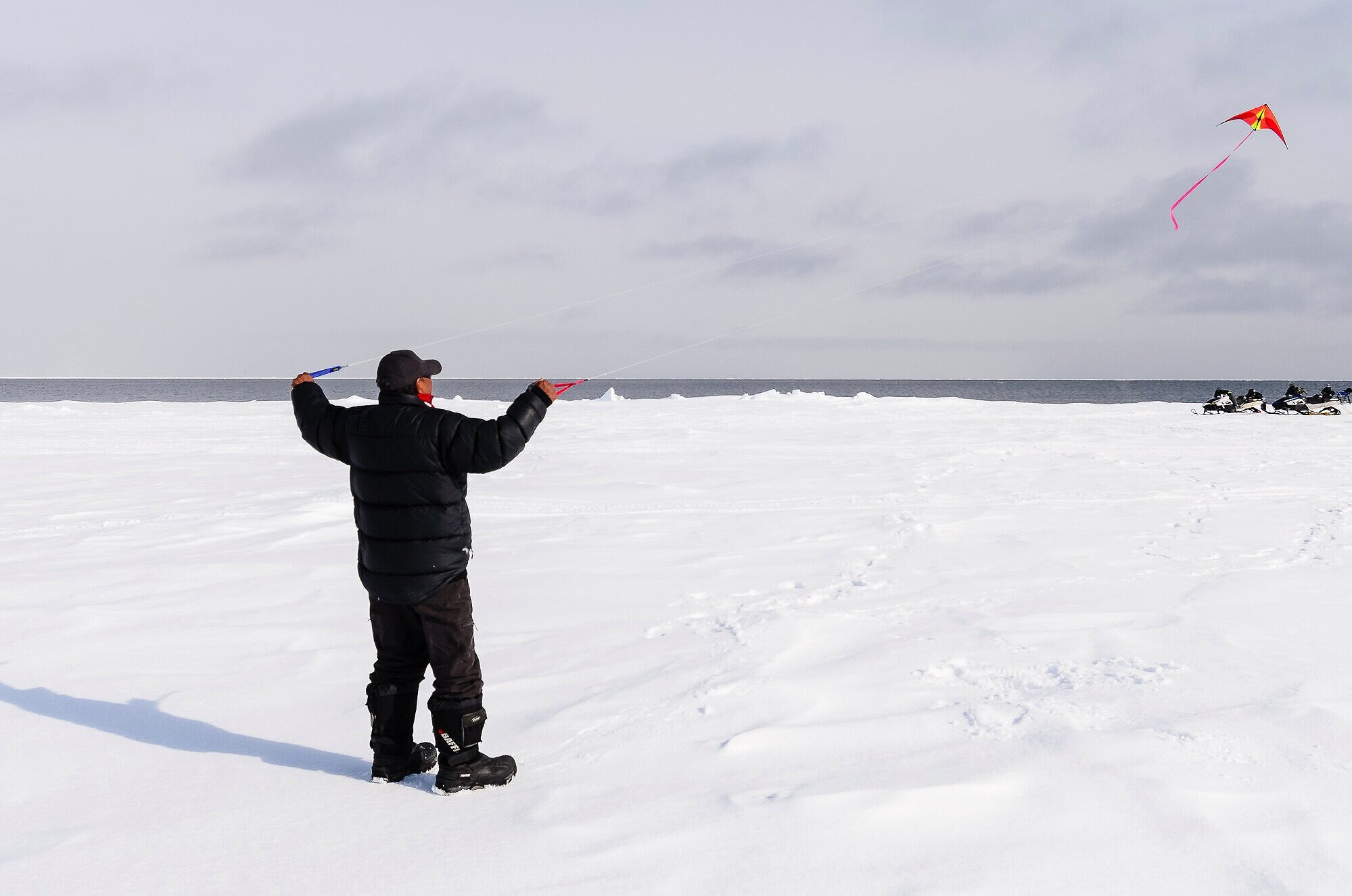
Where Men and Bears Dance

Where Men and Bears Dance
Puvirnituq, Nunavik, Canadian Arctic
Golden evening light shines through an ice sculpture of a polar bear and an Inuk dancing together at sunset. For thousands of years the people and the bears have shared the sea ice environment, traveling upon its surface and using it as a platform for hunting seals. Both the Inuit and the bears are perfectly adapted to the ice, and both are equally affected by its' disappearance. The work of the artist who carved this sculpture perfectly captures this essential relationship between the people, the bears, and the ice.

Standing Bear and Inuit Hunting Camp
Baffin Bay, Nunavut, Canadian Arctic
A polar bear stands tall on hind legs to scan the surface of the sea ice near an Inuit hunting camp. Both the men and the bear are out on the ice hunting seals. Of all the animals the Inuit hunt, Nanuq, the polar bear, is the most respected and most prized. Hunters consider Nanuq to be wise, powerful, and almost human. For the hunters, taking a polar bear is a source of prestige, accomplishment, and pride – but the hunt is always conducted with deep respect for the bear.
Polar bears have become the living symbols of climate change, and with good reason. As the planet warms, the sea ice that the bears use as a hunting platform is melting, putting the animals at risk. The same is true for the Inuit, who share the ice, and the risks associated with warming, with the bear.
Because the bears are threatened by climate change, some environmental organizations are calling for a complete ban on polar bear hunting. The Inuit disagree. They have shared the ice with the bears for thousands of years, and they carefully monitor the bear populations. Moreover, no one knows more about Nanuq than they do, and they feel that their culture is endangered by these well-intentioned but misguided outsiders.

An Inuit Hunter Back From a Day of Hunting on the Sea Ice
Qaanaaq, Greenland
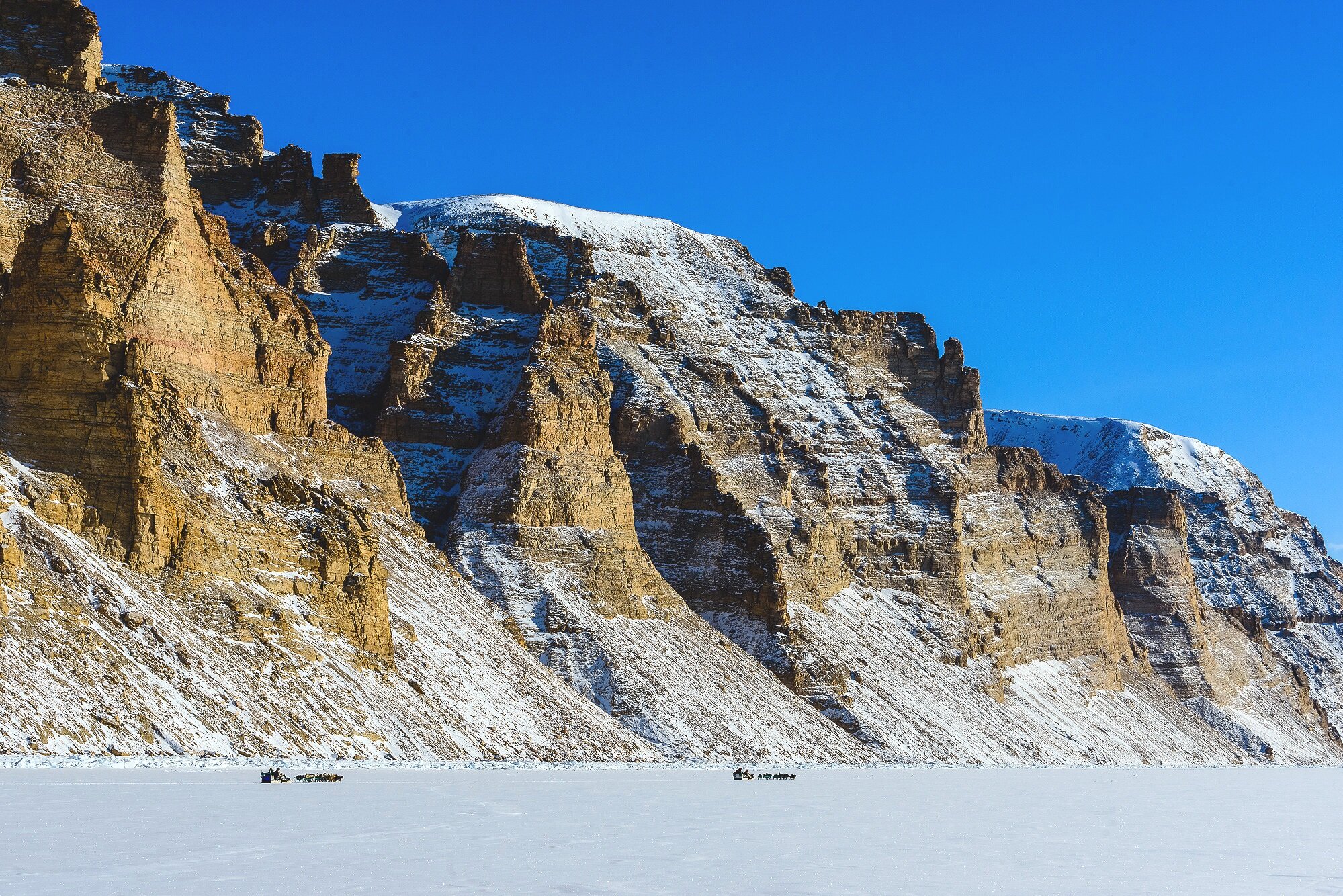
Inuit Hunters Traveling Over The Sea Ice
Thule, Greenland
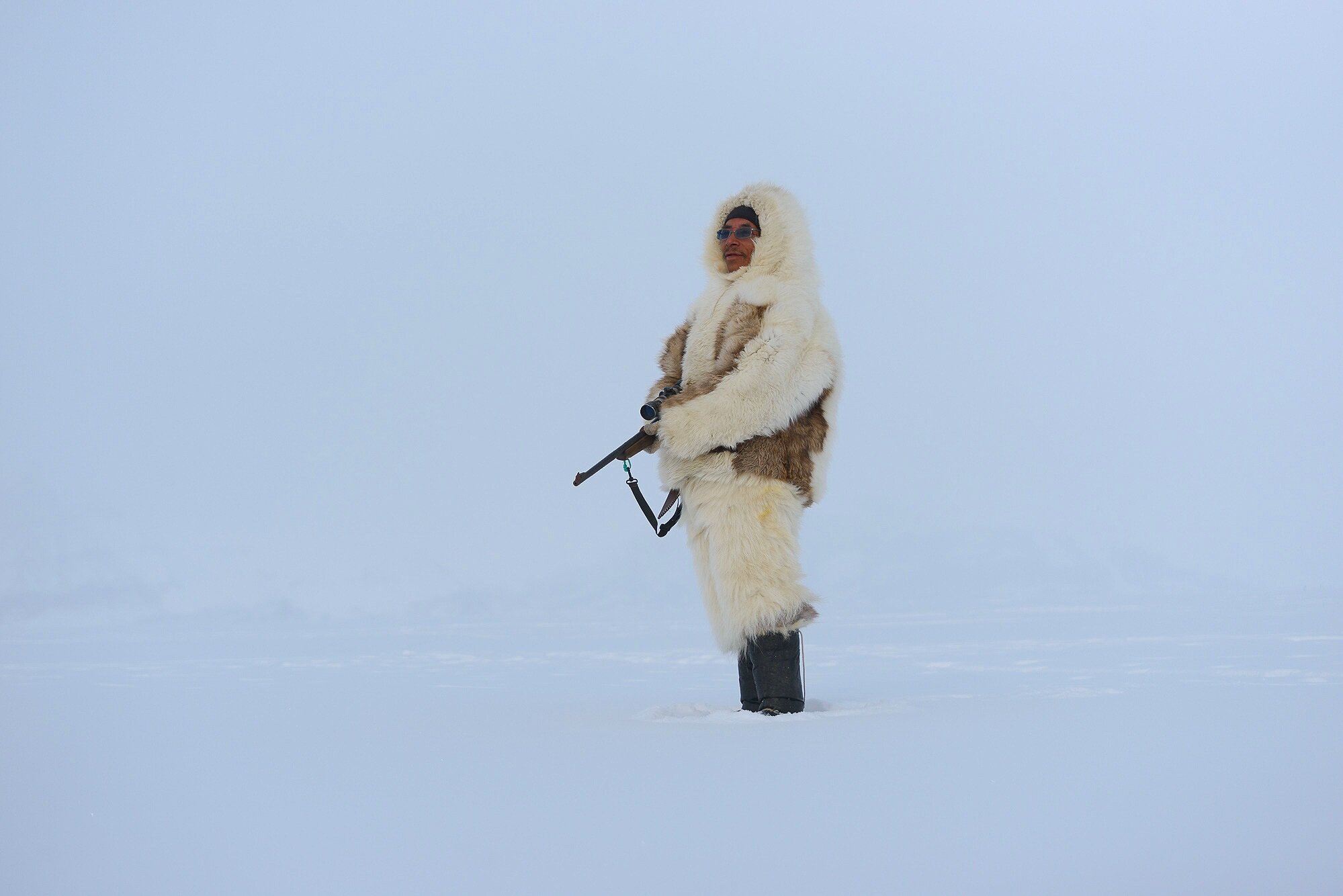
Tomas Scanning The Sea Ice For Seals
Thule, Greenland

Arriving at Siorapaluk
Thule, Greenland
An Inuit dog sled travelling over the sea ice arrives at Siorapaluk, Greenland. Siorapaluk is the northernmost village on the planet.
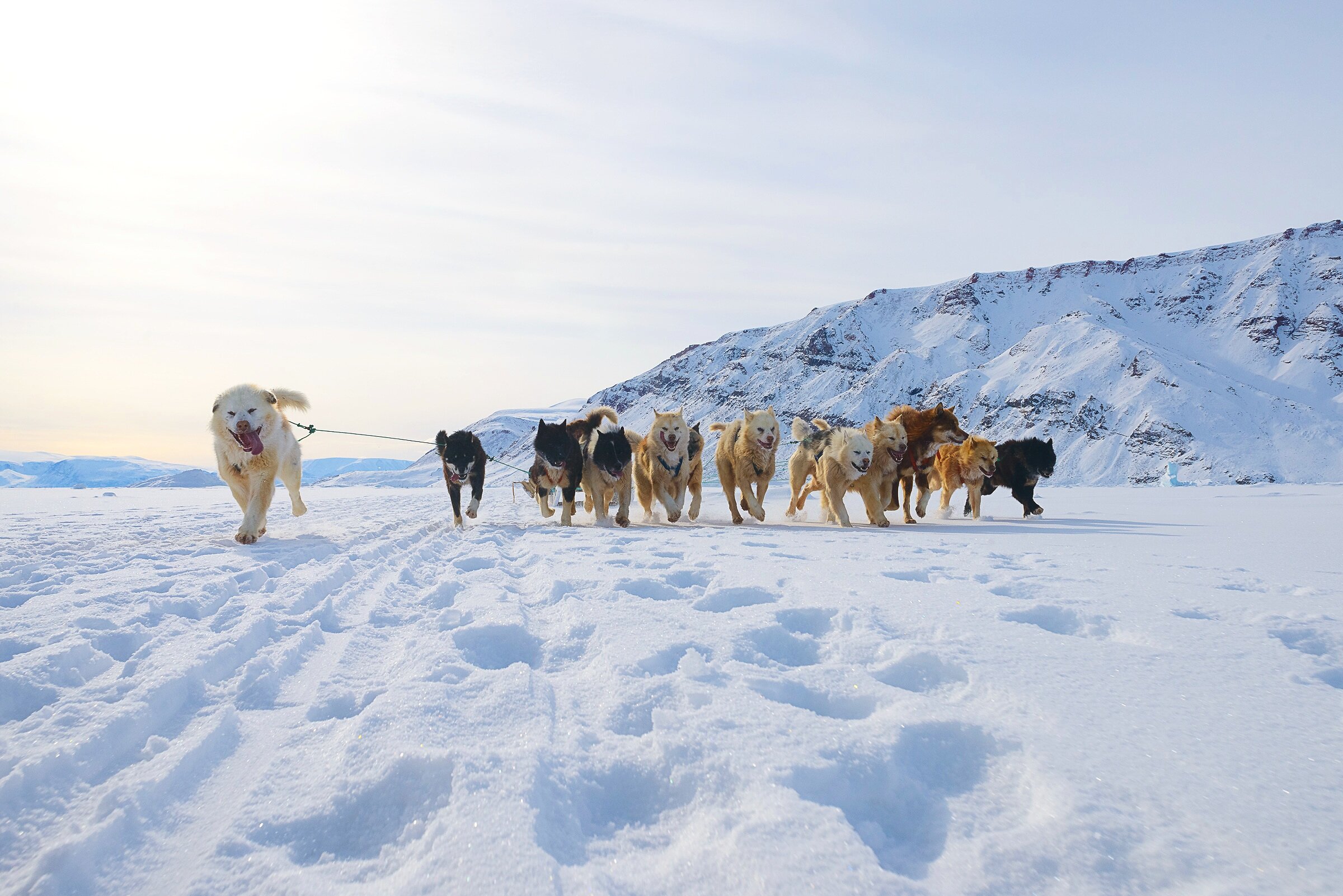
Twelve Dogs Running
Thule, Greenland

Inside the Snowhouse
Puvirnituq, Nunavik, Canadian Arctic

Snowhouse at Night
Puvirnituq, Nunavik, Canadian Arctic

Polar Bear Skull
Gjoa Haven, Nunavut, Canadian Arctic
Just like the polar bear, the Inuit are hunters, and the polar bear and the polar bear hunt are central to their culture. The bear hunt is a traditional activity that ensures cultural cohesion and provides sustenance for the community. Traditional knowledge dictates that no part of the bear is wasted. The meat is shared with the community, and the best parts are offered to the elders. The bones are made into tools and handicrafts; the hide is fashioned into clothing; and various other parts are used to make traditional implements.
In keeping with long-held cultural traditions, Inuit still hunt polar bears as part of their subsistence lifestyle. Hunters pay respect to Nanuq's spirit by hanging the skin in an honored place. In the past, if the bear was male, the hunter offered the bear's spirit tools such as knives and bow-drills; if the bear was female, the hunter offered knives, skin-scrapers, and needle cases.
Today in Nunavut there is a lottery for hunting tags. In each village, names are drawn randomly out of a box, and the winners have 48 hours to successfully kill a polar bear. If they fail their tag goes to another hunter.

Putlaq
Thule, Greenland

Look to the Future, Remember the Past
Kangiqsujuaq, Nunavik, Canadian Arctic
An Inuit elder looks towards the waters of Hudson Strait as his dog snoozes at his feet. To thrive in their challenging Arctic environment, the Inuit rely upon the wisdom and guidance of traditional knowledge passed down for millennia. This traditional ecological and adaptive knowledge, called Inuit Qaujimajatuqangit in Inuktitut, includes not only a road map for navigating the physical landscape, but also guidance for safely negotiating the spiritual landscape as well. For Inuit the two are the same, encompassed by a sentient, animate, mystic power permeating all of existence they call Sila.

Inuit Sila
Puvirnituq, Nunavik, Canadian Arctic
I have heard Sila described this way:
“Sila is our concept for the weather, the climate, the mind, consciousness. It is the universal order where man is in unity with nature. Sila is the shared life that the sea, wind, mountains, animals, and humans possess. When you share consciousness with nature you treat nature with respect.”

Berry Picking
North Greenland
In Inuit culture, elders are revered for their wisdom acquired over many years. Young people look to them to learn about the interrelationships between all living things and how to navigate the physical and spiritual worlds.
By contrast, in modern industrial society, elders are not seen as sources of wisdom. As columnist Ruth Marcus writes in The Washington Post, "the explosion and primacy of technology have served to reduce the value, both real and perceived, of experience."

Komatic on Thinning Ice
Baffin Bay, Nunavut, Canadian Arctic
An Inuit komatic, or sled, sits atop thinning sea ice. Decades ago Inuit hunters reported environmental changes to the scientific community, noting the thinning sea ice, warmer summers and shorter winters, changing animal migrations, melting permafrost, and eroding shorelines. Harvesting game and traveling “on the land” became increasingly dangerous, forcing the Inuit to adapt their traditional way of life to the shifting conditions.

Hunters on the Winter Trail
Coast of Nunatsiavut, Canadian Arctic
Inuit caribou hunters head back to camp after a successful hunt. As they face the challenges posed by climate change, the Inuit must adapt once again to changes forced upon them from the outside. But they are confident they will succeed, for they have shown amazing resilience and adaptability in the past.
The changes faced by the Inuit have been rapid and much more recent than most people realize. In many of the communities I visit, the elders were born and raised in nomadic hunting camps “out on the land,” living in skin tents and snow houses as their families moved with the game and the seasons. Many lived a mostly nomadic existence well into the 1960s and 1970s.

The Fan Hitch
Puvirnituq, Nunavik, Canadian Arctic
In the Canadian and Greenland arctic regions, the traditional way to harness sled dogs is with the fan hitch. Each dog is tethered to the sled by an individual tugline so that when they run they spread out in a fan shape in front of the sled. The fan hitch gives the dogs plenty of room to maneuver around rough ice, cracks, open water, and any other obstacles on the sea ice and tundra.
During the 1950s and 1960s, Royal Canadian Mounted Police and Quebec government officials slaughtered thousands of sled dogs in what is now Nunavik, the Inuit homeland in northern Quebec. Both federal and provincial government policy was to move the Inuit from their nomadic hunting camps to permanent settlements. In order to speed their assimilation, the government agencies destroyed the Inuit people's main form of transportation. By the early 1970s the Inuit sled dog was nearly wiped out in Nunavik.

Traditional Inuit Kayaker
Ilimanaq, Greenland
Throughout the Arctic the Inuit are adept at picking and choosing technologies that best suit their needs, and often traditional clothing and equipment is still used by choice. Seals and walrus are sometimes hunted from dogsleds in winter; narwhal from kayaks in summer. Some hunters choose to wear polar bear fur pants and sealskin mittens and boots rather than store-bought items. The equipment they use comes down to personal choice, but their fundamental knowledge of the environment, their survival skills, and the way they find and harvest their food has not changed in a thousand years.

Aayu Peter - Hunter, Lawyer, Sealskin Fashion Designer, Member of the Order of Canada
Ilulissat, Greenland
Aayu Peter models one of her own sealskin parkas in Ilulissat, Greenland. Aayu is a member of the Order of Canada, an honor bestowed upon her by Her Majesty Queen Elizabeth II in recognition of her outstanding achievement, dedication to the community, and service to the nation.
As hunters of the northern ice, the Inuit are experiencing the effects of changes in Sila, and the cultural impact is significant. Most Inuit see themselves as part of a thriving modern hunting society, and they form their self-perceptions in terms of their relationship to Sila. As Sila becomes unpredictable it is cause for concern. A large proportion of the Inuit diet comes from the land and sea, and these “country foods” provide more than healthy nutrition; they are the foundation of Inuit cultural identity.

A Winter's Night in Puvirnituq
Puvirnituq, Nunavik, Canadian Arctic

Old and New
Resolute, Nunavut, Canadian Arctic

Inuit Sled Dog Team on the Sea Ice, Pulling Hard
Thule, Greenland

The Drum Dancer
Baffin Island, Nunavut, Canadian Arctic

The Country Music Singer
Puvirnituq, Nunavik, Canadian Arctic
Scotch-Irish American country music and traditional folk music from the British Isles were introduced to the Inuit by whalers and traders in the late 1800s. At the same time, the Inuit adopted new instruments such as squeeze-box accordions, fiddles, and guitars. Today these new musical styles and instruments are considered part of traditional Inuit culture.

The Sled Masters
Puvirnituq, Nunavik, Canadian Arctic
Inuit hunters stand with their teams on the sea ice of northeastern Hudson Bay at a community event celebrating the return of the sled dog to Nunavik. Many elders remember being left with no means of transport after their sled dogs were destroyed by the Royal Canadian Mounted Police and Quebec officials in the mid-20th century.
Not only did the dogs provide transportation, they were the hunter's partners. When hunting polar bears the dogs would be released to chase the bear down and distract it as the hunter approached. The dogs could find their way home in whiteouts and blizzards, saving hunter's lives. Today many Inuit feel strongly about retaining their cultural traditions, and dog teams are once again are common in the villages.

The Winner
Puvirnituq, Nunavik, Canadian Arctic
Many hands lift up the winner of a community festival sled dog race. These community festivals promote the culture of dog team travel, honor the elders who grew up living out on the land, and stimulate young people's interest in sled dogs and in Inuit Qaujimajatuqangit - traditional Inuit ecological knowledge.
For the Inuit, the sled dog was the key to survival. For hundreds of years the people depended upon the dogs to locate seal breathing holes and birthing lairs under the ice; to track and catch wounded prey; to alert the people to the presence of polar bears; for keeping bears away from camp; and for carrying belongings on their backs in summer and hauling heavily laden sleds over the snow and ice in winter. Without their partners the sled dogs, life for the people in the far north would have been very difficult indeed.

A Stroll Into Town
Disko Fjord, Greenland

Traditional Wood and Sod House
Pond Inlet, Nunavut, Canadian Arctic

Building the Snowhouse
Puvirnituq, Nunavik, Canadian Arctic

Inuit Hunting Camp at the Floe Edge
Baffin Bay, Nunavut, Canadian Arctic

Inuit Hunting Camp on the Sea Ice
Baffin Bay, Nunavut, Canadian Arctic

Qalaseq
Thule, Greenland

Just Being Kids
Pangnirtung, Nunavut, Canadian Arctic

Young Hunter
Abloviak Fjord, Nunavik, Canadian Arctic

Chiseling For Fresh Water
Puvirnituq, Nunavik, Canadian Arctic

Searching For Seal Holes
Baffin Bay, Nunavik, Canadian Arctic

Community Feast
Kuujjuaq, Nunavik, Canadian Arctic

Inuit Girl
Puvirnituq, Nunavik, Canadian Arctic

Nukapiajuak
Thule, Greenland

Sea Ice Meltwater at Midnight
Eclipse Sound, Nunavut, Canadian Arctic
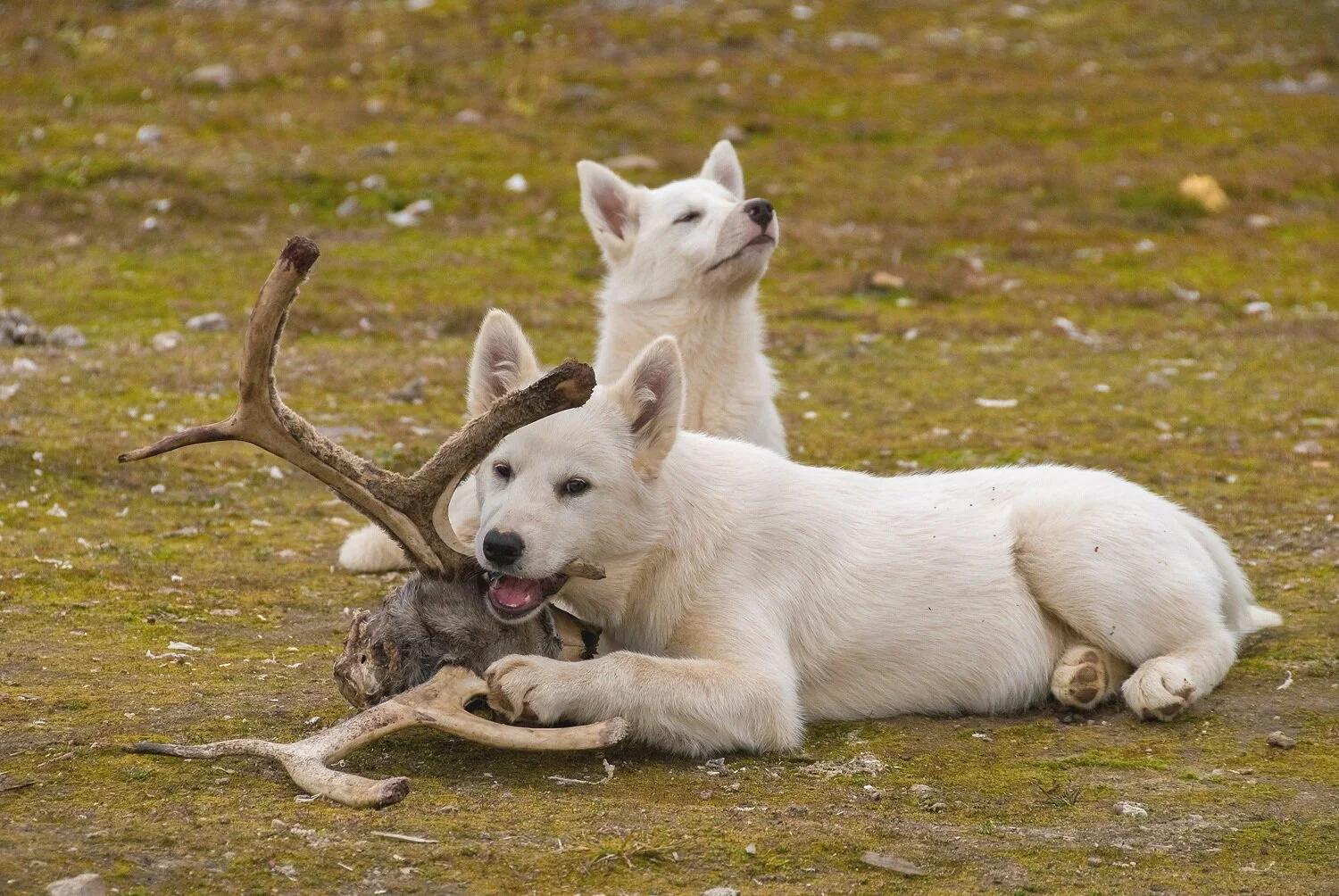
Siblings and Future Sled Dogs
Qiqiktarjuaq, Nunavut, Canadian Arctic
These puppies taking turns gnawing on a caribou skull will grow up to be muscular Inuit sled dogs. The Inuit sled dogs are generally high-spirited and friendly, but they also have an aggressive side and fight amongst themselves to establish dominance. A team organizes itself much the way a wolf pack does, with an alpha male and an alpha female at the top. The rest of the dogs in the team take their places somewhere in the hierarchy.
The future of the Inuit sled dog in the Canadian Arctic is secure for now, but as the ice becomes less stable and more dangerous, the need for the dogs may diminish. In parts of Greenland where the ice is no longer trustworthy some hunters have been forced to destroy their teams.

With Her Hands Full
Gjoa Haven, Nunavut, Canadian Arctic

Sled Dogs at Work
Thule, Greenland
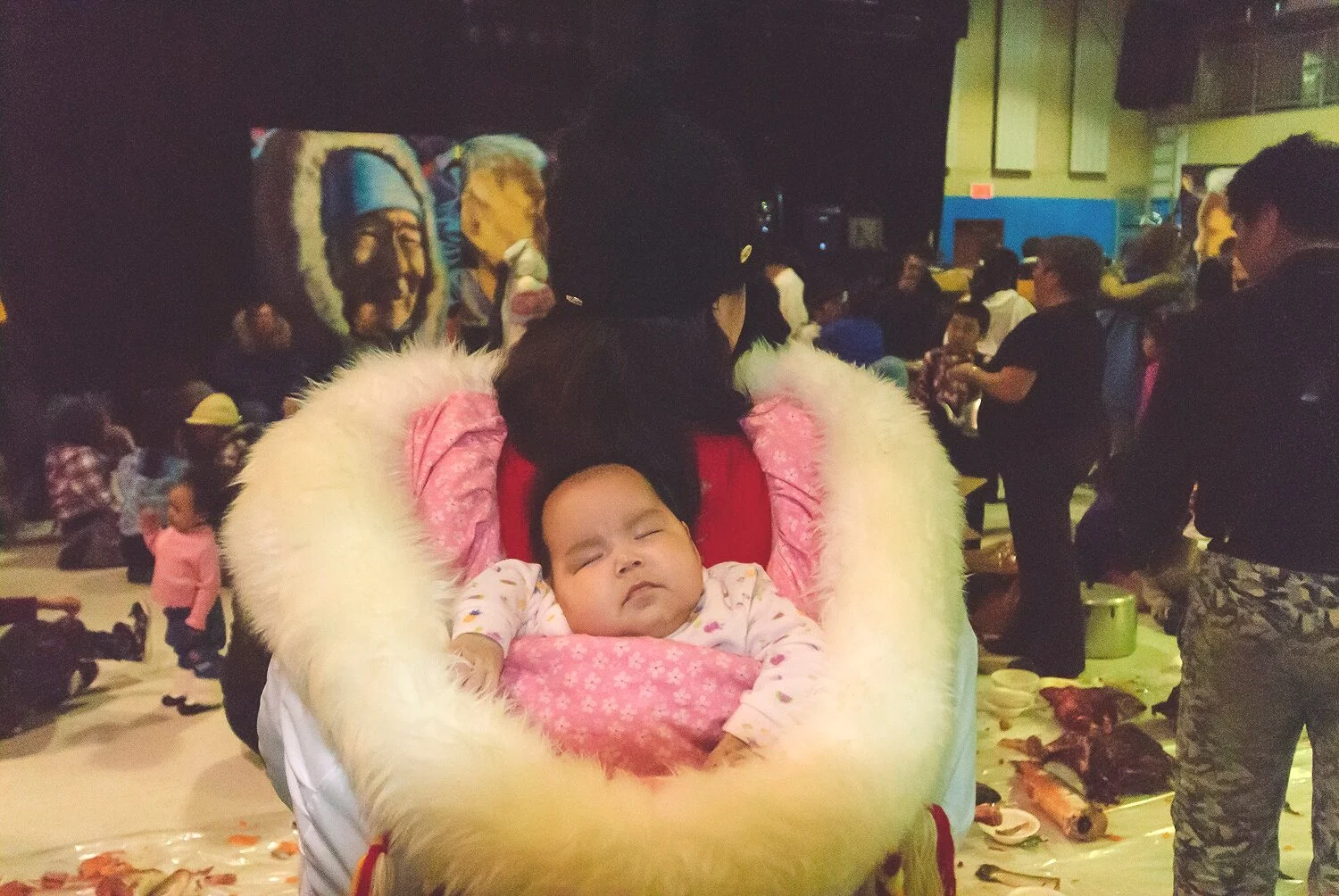
In The Amauti
Puvirnituq, Nunavik, Canadian Arctic

Netsilik Inuit Girl
Gjoa Haven, Nunavut, Canadian Arctic

Tomas
Thule, Greenland

Dog Team Running on the Sea Ice
Puvirnituq, Nunavik, Canadian Arctic

Hunting The Sea Ice 1
Eclipse Sound, Nunavut, Canadian Arctic

Hunting The Sea Ice 3
Eclipse Sound, Nunavut, Canadian Arctic

Inuit Dogsleds Traveling the Sea Ice
Thule, Greenland
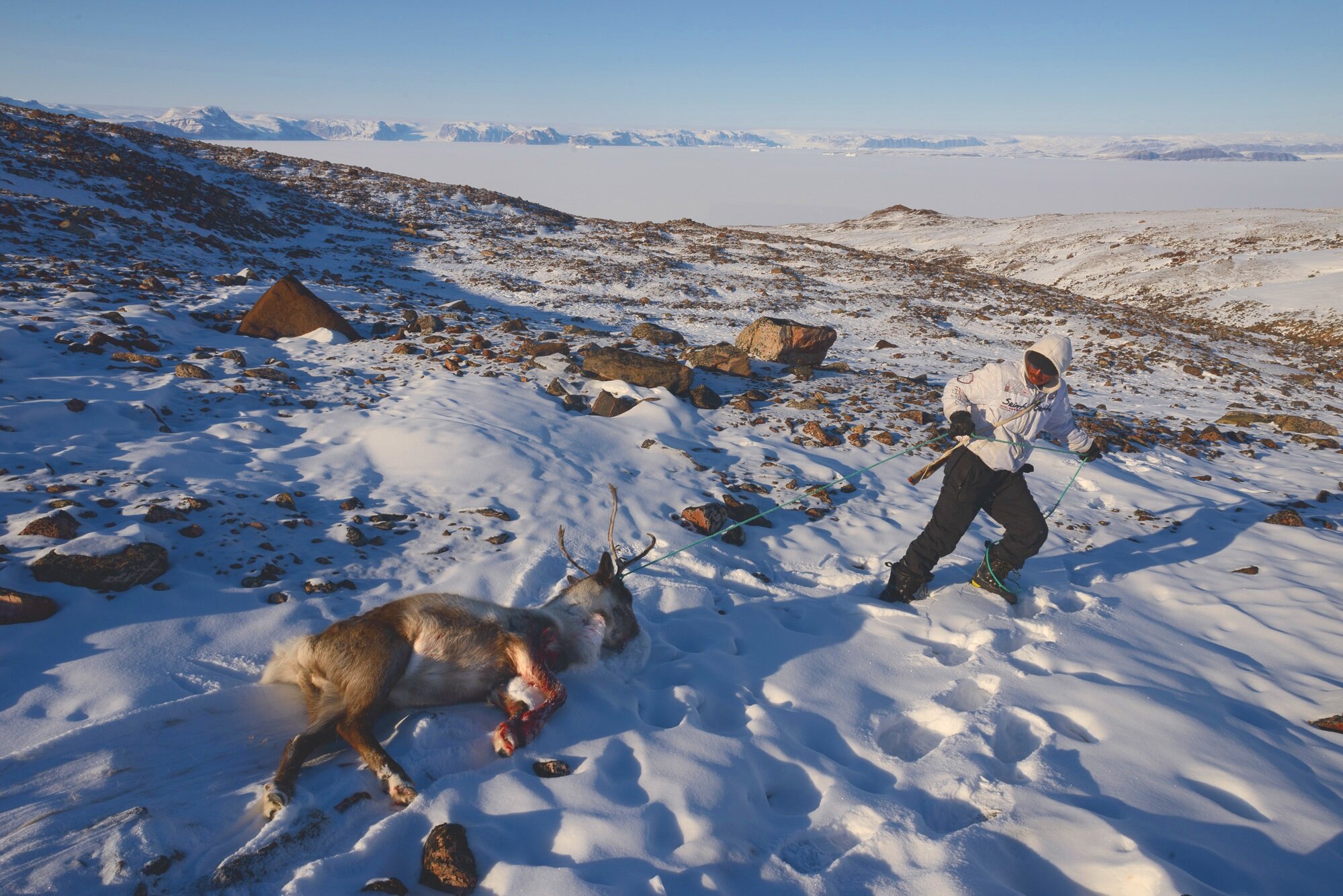
Qalaseq Pulling a Caribou Out of The Mountains Above Inglefield Fjord
Thule, Greenland

Fresh Catch
Sisimiut, Greenland
As the sea ice becomes less reliable as a hunting platform, many Greenland Inuit are spending more time catching fish for food security.

The Fast Runner
Puvirnituq, Nunavik, Canadian Arctic
A young Inuk wins a footrace over the sea ice at a community festival celebrating Inuit culture.
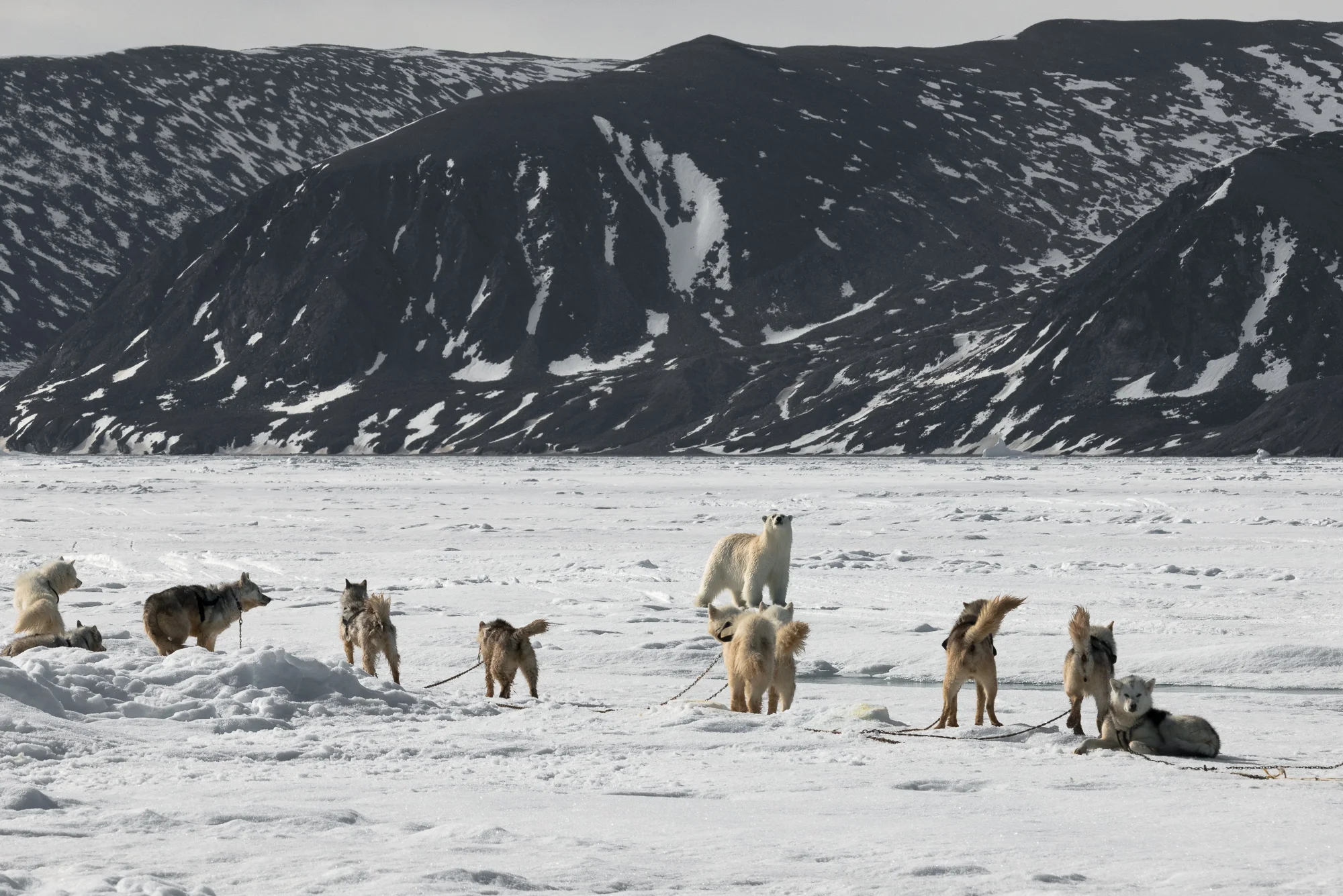
Sharing the Sea Ice
Baffin Island Floe Edge, Nunavut, Canadian Arctic
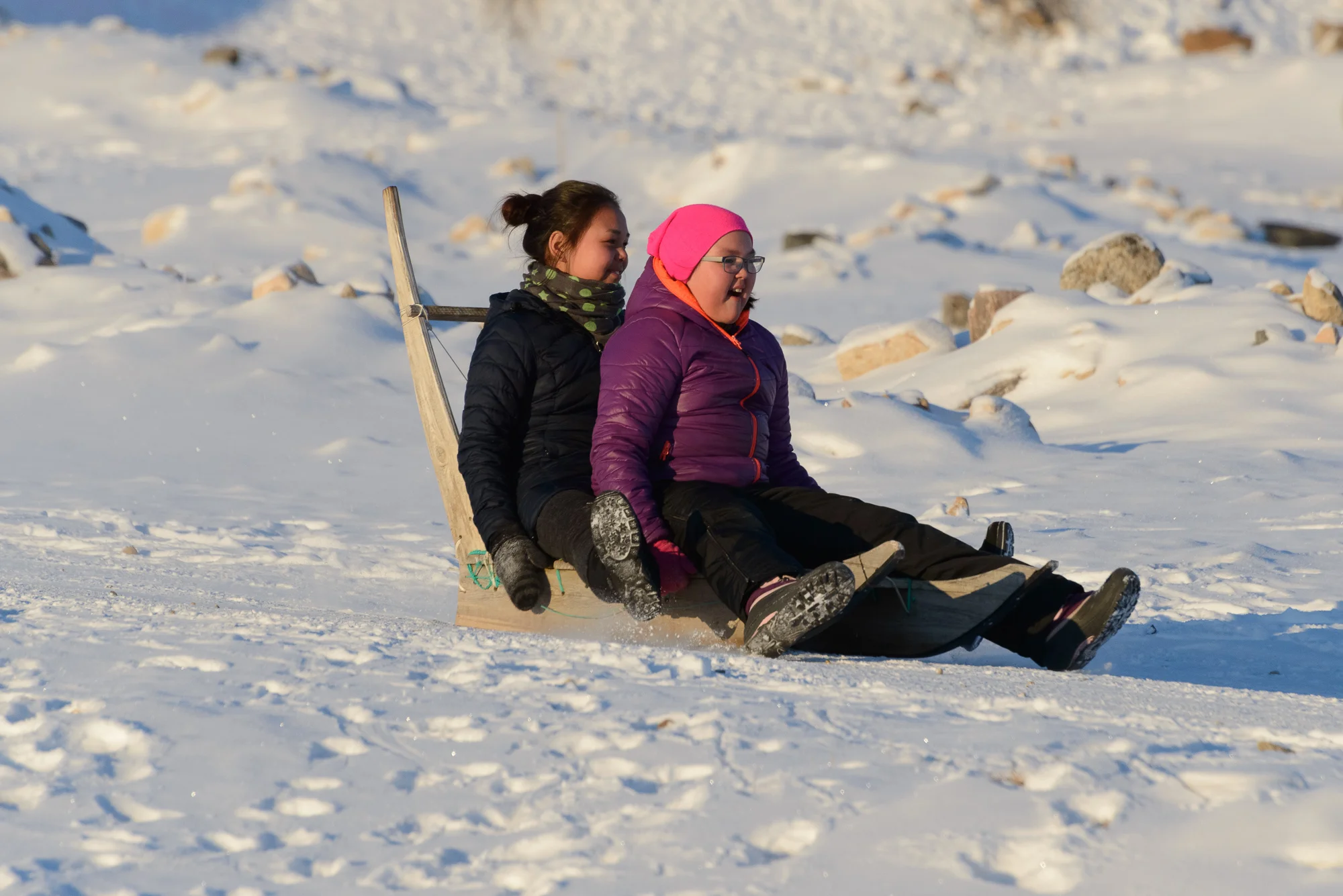
Girls Sledding
Qaanaaq, Thule, Greenland
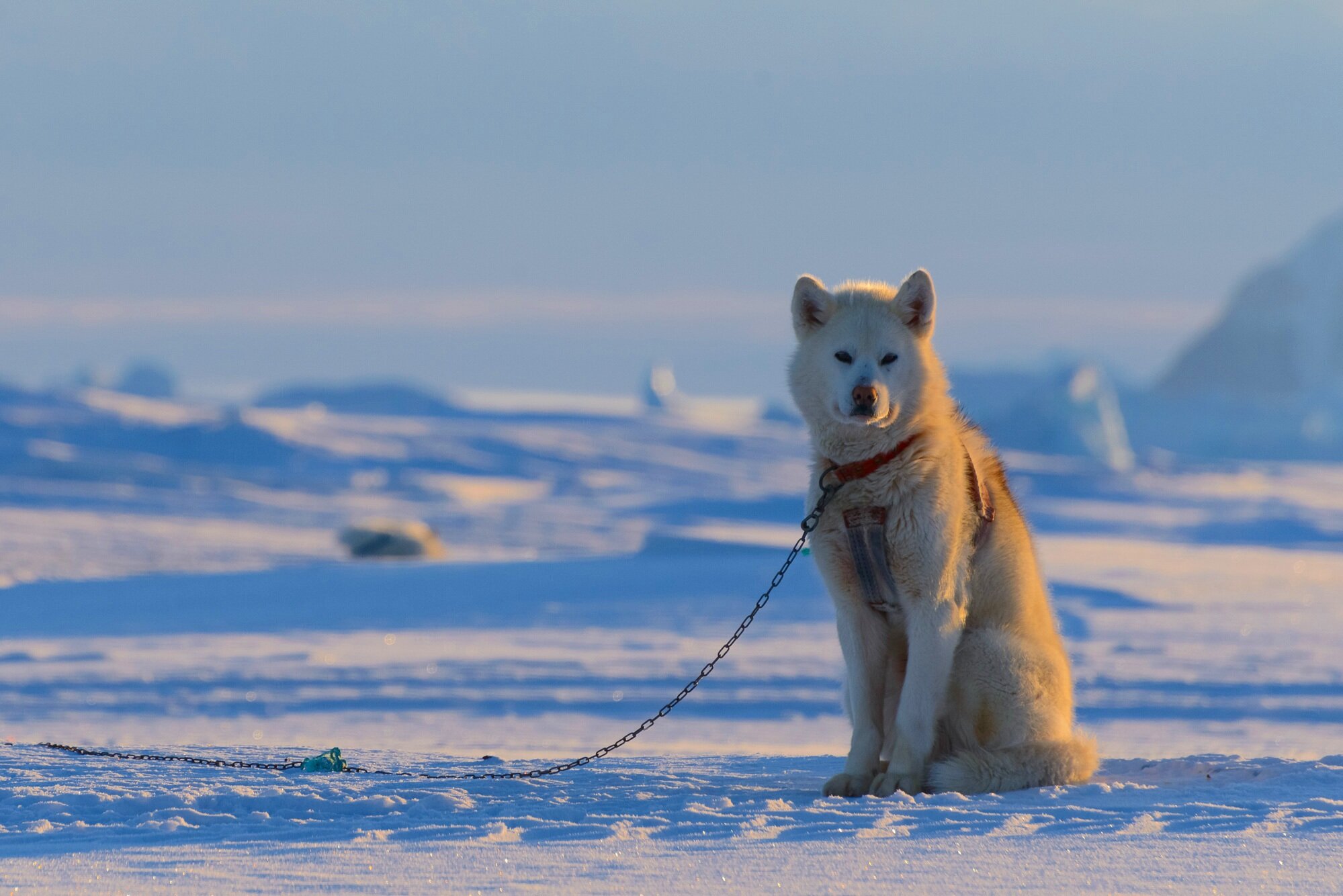
Greenland Sled Dog
Qaanaaq, Thule, Greenland

Mural in the Church
Siorapaluk, Thule, Greenland

Inuit Hunter Leading His Dogsled Onto The Ice
Qaanaaq, Thule, Greenland

Inuit Sled Driver Traveling Through Rough Sea Ice
Thule, Greenland
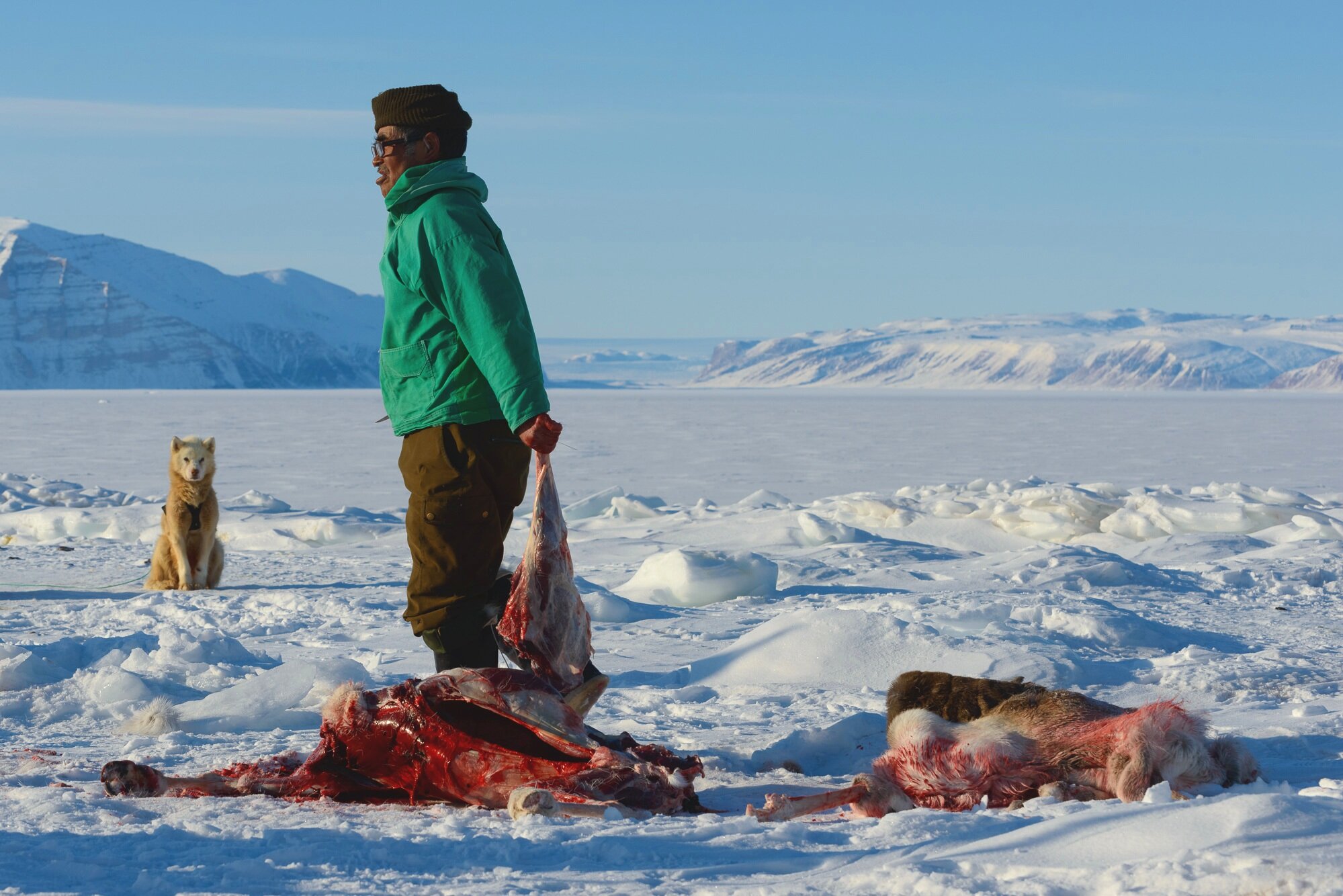
Putlaq Butchering Caribou
Inglefield Fjord, Thule, Greenland

On The Labrador Sea in Winter
Nunatsiavut, Canadian Arctic
An Inuit hunter travels over the sea ice of Seven Islands Bay off the northern coast of Nunatsiavut, Labrador, in ferocious sub-zero winds.

A Polar Face Off
Baffin Island Floe Edge, Nunavut, Canadian Arctic

Ilonguok Jumps on the Sled
Thule, Greenland
Inuit dogsleds do not have brakes, and so the dogs must be extremely well trained to stay put when told to do so, and to go when given the command. Once the command to go is given, the dogs take off rapidly, and the driver must be ready to jump on the sled as it passes him or else he will be walking for a long way.

Traveling Over Trackless Sea Ice
Thule, Greenland

Tobias and Caribou
Thule, Greenland

Inuit Tent Ring
Hudson Strait, Nunavut, Canadian Arctic

Inuit Fishing Boat and Iceberg
Uummannaq, Greenland

Ancient Alaskans
Arctic National Wildlife Refuge, Alaska
The remains of ancient Inupiat houses protrude from the tundra of the coastal plain at the edge of the Beaufort Sea in Arctic Alaska. These ruins are in the contested 1002 Area - the portion of the refuge that pro and anti oil development groups have fought over for years. In the distance, the high peaks of the Brooks Range rise over the coastal plain. Historically the Inupiat have utilized the entire region, from the sea to the mountain headwaters.

Ancient Thule Whalebone House
Resolute, Nunavut, Canadian Arctic


